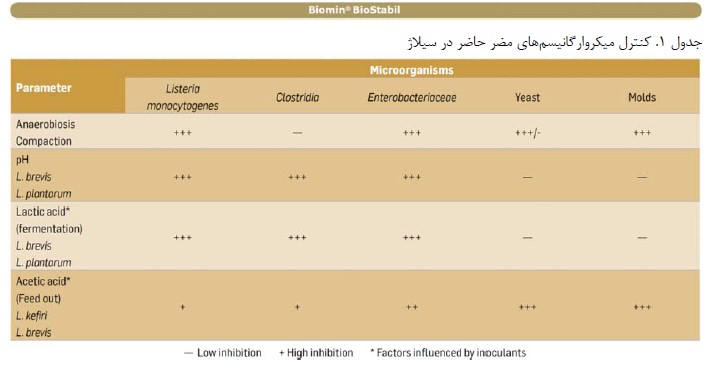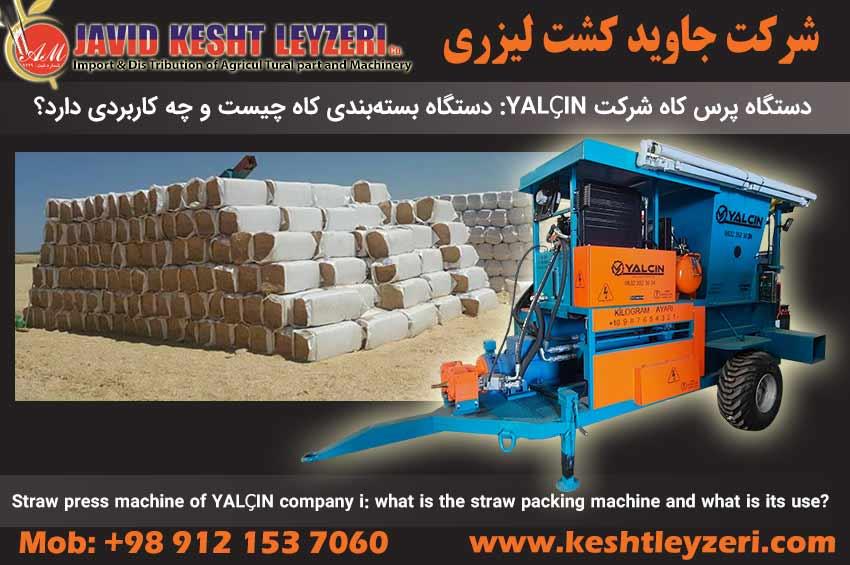
The effects of using biostable mayes on improving the quality of corn silage
javid keshtleyzeri Co.ltd
Corn silage is used in ruminant diets worldwide as an excellent source of energy and fiber. While corn is able to grow in many climates, the quality of corn silage is greatly affected by harvest time and filling methods. Harvesting usually occurs when the condition of the plant or harvesting conditions is compromised and the possibility of silage contamination with pathogens increases.
Adding biostable myez to the harvested materials protects them from pathogens before filling, and it is ensured that the quality of the silage and the subsequent performance of the animals will be as high as possible. Maize silage grows successfully in most climates around the world, but in order to obtain the highest quality, timely harvesting and modification of emptying methods are necessary. Adding biostable maize to harvested materials guarantees protection against a wide range of pathogens, maintaining the quality of forage and improving animal performance.
BioStabil Mays is a food substance that is used as an additive in the production of animal and poultry feed. This product is designed to improve the digestion and absorption of nutrients in livestock and poultry.
Biostable Mayz includes plant compounds, amino acids, vitamins, minerals and digestive enzymes. These compounds improve the process of digestion and absorption of nutrients in the digestive system of animals. By using biostable mayz, digestive function will be improved and nutrition efficiency will be higher.
In addition, by using biostable myz, the growth of new cells in the digestive system is maintained and stronger and healthier cells are produced. This improves the performance of the immune system of animals and their resistance to diseases.
Biostable Myez can also act as a natural anti-stress. Using this product in stressful conditions reduces the negative effects of stress on livestock and poultry and maintains their health and performance.
In general, biostable rice improves digestion and absorption of nutrients, strengthens the immune system, reduces the negative effects of stress and improves the performance of livestock and poultry.
Corn silage is the main part of cattle diet in many different geographical regions around the world. This food item provides an excellent source of energy along with fiber to stimulate rumination activity. This food item has a high value and this value is not only important from the point of view of the animal and in terms of the content of high nutrients to support the production, but also from the point of view of profitability and the economic point of view of the farmer, because it is able to improve the productivity of the food and reach the levels It is a high performance of animals.
Getting more benefits from corn silage using Biostable Maize®
Although the original origin of the corn plant was in the central regions of Mexico, today it has adapted and grows in a wide range of climates and in many different types of soil. Even in areas with unpredictable rainfall, corn is grown for storage and maintains a significant source of nutrients compared to other forages. However, to become a valuable and tasty food, it should be harvested on time and properly preserved. If the filling of fodder corn product has a poor quality process, it will cause problems for the livestock manager and animals during feeding.
What can ranchers do to have a better management for making silage from corn fodder?
The best way to grow corn and preserve silage comes from very good fields. However, in practice, crop management is very different from one farm to another. Some farms manage silage easily and others not so well. It often happens that a good crop obtained from the field loses its nutritional value significantly during storage in ditch and above-ground silos and during feeding. Silage heating during storage and during feeding is very common. Small changes that occur due to improper management in the fermentation stage often lead to complaints about reduced feed intake.
Why is harvesting time very important in silage production?
In practice, harvesting corn for silage is done in one of two ways. The one whose harvesting time coincides with the busy time of the end of summer, when the amount of work is very high and the lack of machinery and labor force due to other necessary work that exists causes the corn harvest to be delayed in that season. Another way is that harvesting corn in early fall is one of the last farm jobs of the year when the temperature is lower, short days and frequent rains occur, which prevents machines from entering the field. None of these conditions are ideal. Any delay in harvesting the corn plant increases the risk of infection with fungus, mold and yeast. If the harvest happens at the end of summer in southern countries, the drying of leaves, stems and seeds will intensify the growth and development of fungi and other harmful microorganisms. These pollutants are carried by plants and stored in silos. Over time, the starch in the grain turns into a less available form. Dried leaves and stems are less digestible for animals and it will be more difficult to cut them into smaller pieces for proper crushing. There is probably a high level of mycotoxin contamination and more problems arise when contaminated silage is fed. Harvesting in early autumn, which is more common in cooler regions and more in the north, corn starts very slowly after planting due to the decrease in soil temperature. In many cases, corn must be harvested before the grain is fully mature due to the high risk of early frost. In areas that have long periods of cooling with abundant and prolonged rains, the harvesting of immature plants under poor field conditions prevents the use of harvesting machines. Both scenarios create more problems during filling and feeding.
What kind of problems can be expected with a delay in harvesting or harvesting immature plants?
Any delay in harvesting the product increases the risk of contamination by fungi, molds and yeast. This delay causes aerobic and anaerobic instability in the discharged fodder, which causes a significant reduction in the amount of nutrients. Dried plants are harder to cut, and many leaves remain uncut as they pass through the harvester's blades, making them resistant to compaction. Proper compression of such materials is almost impossible; A lot of oxygen will remain hidden in the stem, which causes more problems as a result of the activity of yeasts and general instability in the discharged fodder due to heat. Plants that are collected with relatively little dry matter and in rainy and humid conditions are exposed to significant soil contamination with a high risk of contamination with Clostridia, Listeria and Enterobacteriaceae.
Control of harmful microorganisms present in silage

All pathogens present in the plant will also be present in the storage tank and will compete for the consumption of nutrients including carbohydrates and proteins. During their growth, microorganisms also perform their fermentation. For example, the presence of clostridia leads to higher levels of butyric acid, and alcohol is the result of yeast fermentation in silage. The result is not only a significant decrease in stored fodder nutrients, but also a decrease in palatability. Listeria is responsible for issues related to abortion and mastitis in livestock. Enterobacteriaceae, which is very common in wet silage, converts plant sugars into acetic acid, ethanol, and carbon dioxide, causing loss of nutrients, bad odor, and changes in silage taste.
Is there a way to prevent these undesirable microorganisms from entering the silage or to kill them before storing the silage?
Unfortunately, there is no such method. We cannot remove these microorganisms from the plants by washing or shaking them before emptying the fodder. Also, we cannot use a chemical method because the fodder must be safe and palatable for the productive animals that are fed by it. The only way to reduce the content of microorganisms is to create conditions in the emptied fodder that quickly stop or at least limit their growth, which is unfortunately not an easy task. When the growth of Clostridia and Enterobacteriaceae causes a limitation in the rate of pH reduction, yeast and Listeria can cope with mild acidic conditions. Since yeast and clostridia are not affected by oxygen removal, therefore concentration and oxygen removal will not always be useful. Yeast can survive under aerobic and anaerobic conditions, and clostridia needs anaerobic conditions for growth and reproduction. Table 1 shows some methods of controlling microorganisms. Fodder is the main part of the ration. In order to reduce costs in animal husbandry, the quality of fodder must be high.
Is there a way to limit the growth of harmful microorganisms in such a complex situation?
The biostable product of Biomin Company is a new solution for corn fodder that is being discharged with such a wide range of pathogens. Biostable Maize ® is an additive with broad protection that covers a large part of the dry matter of the harvested corn.
Biostable Maize contains a unique combination of strains that are effective in combating pathogens during the emptying process of corn fodder (Table 1). This unique combination of strains includes the following, and Enterococcus faecium is a fermentation-like bacterial strain that acts as an initiator, causing the pH to drop to a range of 5.5 to 6. Lactobacillus plantarum is a strong fermentation compatible strain that promotes the fermentation process and limits the growth and proliferation of Enterobacteriaceae and other coliforms. It also has great power in reducing pH and high efficiency in reducing clostridia and listeria in discharged fodder.
Does the use of biostable maize in silage guarantee the best quality of corn silage for optimal milk and meat production?
In the past, different methods have been tested with different results. The search for better results is still ongoing, but currently Biostable Maize ® offers the best solution for silage production. Fodder is the main part of the ration. In order to reduce costs in animal husbandry, the quality of fodder must be high. By using high-quality and well-maintained fodder, we can expect high dry matter consumption and better digestion of nutrients, followed by an increase in feed conversion ratio, and ultimately higher profitability of livestock farming.
Proper management of silage includes the following:
1. Proper harvesting and timely storage of harvested fodder
2. Appropriate cutting length of fodder along with crushing the grain
3. Uniform use of Myez biostable on harvested fodder
4. Knock, knock, knock
5. Timely application of crushed fodder
6. Management of silage harvesting at the time of consumption






